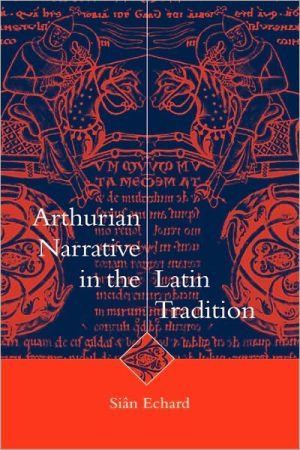

 |

|

The average rating for Arthurian Narrative in the Latin Tradition based on 2 reviews is 4 stars.
Review # 1 was written on 2017-05-26 00:00:00 Man Wah Wong Man Wah WongI discovered this book in the Cardiff University library and thought it would provide a valuable insight into translation in history. I am interested in general history of the Renaissance and Middle Ages and found that this book helped to transfer pre-existing knowledge to the field of Translation. The book is a selection of academic papers from primarily North American institutes, There seemed to be a lot of emphasis on the French language as a vernacular and also, more obviously, Latin. I suppose that this reflects the importance of French as a cultural language at the time. It precedes English as the global lingua franca by some distance. The general introduction chapters were very useful in terms of setting into context the role of translation during the epoque and the political implications that a translator would consider. The stand out chapter for me introduces the subject of Etienne Dolet, a translation martyr who was sentenced to death and executed as a result of his work. The Dolet tale was an intriguing one and demonstrates clearly how a target-language's cultural attitudes have to be taken into consideration when working as a translator. I feel that Dolet is a person upon whom I would like to follow up research throughout the course of my Translation degree. I am a keen fan of Montaigne and it had previously eluded me that a lot of his great work was inspired by his activities as a translator. There are two chapters covering his translation of Raimond Sebond and the detailed critique that has ensued regarding the fidelity of his translation and the speculation of the true political motives behind his methodology. I think that very often, in translation, some of the reasoning and suppositions of translation critics fail to address the actual linguistical differences between foreign tongues. There are massive style changes at work that are bound to change the register of the original author and the translator would often introduce new ideas and themes only at a subliminal level, although that could very reasonably be done within the culture and political / historic climate of the current prevailing target-culture. This book covers a wide variety of other topics, some of which are more relevant and interesting than others. I enjoyed The Alfredan Boethius chapter. The work of Eusebius on Vergil's 4th Eclogue and also there was a certain romance to Leo Africanus' story. I think that this book is quite specialised and obviously could be very much more enlarged with further examples. It is a nice, neat text to furnish a translator with examples of some of the perils his journey might face. I'll definitely refer to this book in future studies. |
Review # 2 was written on 2012-05-14 00:00:00 Brandon Owens Brandon OwensThis introduction to Latin literature will be especially useful to undergraduates coming to the Latin classics (whether in the original or translation) for the first time. The book's chief merit is the manner in which it sets various works of Latin literature in their cultural context, revealing how products of Latin literature, while often being modeled on Greek literary antecedents, are uniquely reflective of the values and ideals of the Romans. The author also deals with the manner in which certain famous Latin stories are handled in later traditions (e.g., her discussion of Renaissance paintings depicting the rape of Lucretia, a story in Book I of Livy's history). A whole book could be written on the influence of Ovid's Metamorphoses on later (Renaissance) painters. Also addressed in various places are important critical issues that have occupied scholars of Latin literature in more recent times. This little volume contains the following chapters: 1. Virgil and the Meaning of the Aeneid 2. Role models for Roman women and men in Livy 3. What is Latin literature? 4. What does studying Latin literature involve? 5. Making Roman identity: multiculturalism, militarism and masculinity 6. Performance and spectacle, life and death 7. Intersections of power: praise, politics and patrons 8. Annihilation and abjection: living death and living slavery 9. Writing 'real' lives 10. Introspection and individual identity 11. Literary texture and intertextuality 12.Metapoetics 13. Allegory 14. Overcoming an inferiority complex: the relationship with Greek literature 15. Building Rome and Building Roman literature Appendix A Extract From Darkness Visible by W.R. Johnson Appendix B Who's afraid of literary theory? by Simon Goldhill List of Authors and Texts Time-line List of translations used / adapted Index of Names and Topics Index of Passages quoted. In her chapter on the Aeneid, the author provides an excellent summary of the critical battle that scholars have waged for decades concerning Aeneas' killing of Turnus in Aeneid 12. Is this controversial climactic scene "pro-Augustan" or "anti-Augustan"? Braund musters the arguments for both sides, along with passages from other books of the poem, political considerations, and viewpoints from Roman philosophical school that are relevant to the discussion. Each chapter concludes with a short section entitled "Further Reading and Study" in which she discusses recent scholarly articles and books that have opened new critical avenues. |
CAN'T FIND WHAT YOU'RE LOOKING FOR? CLICK HERE!!!